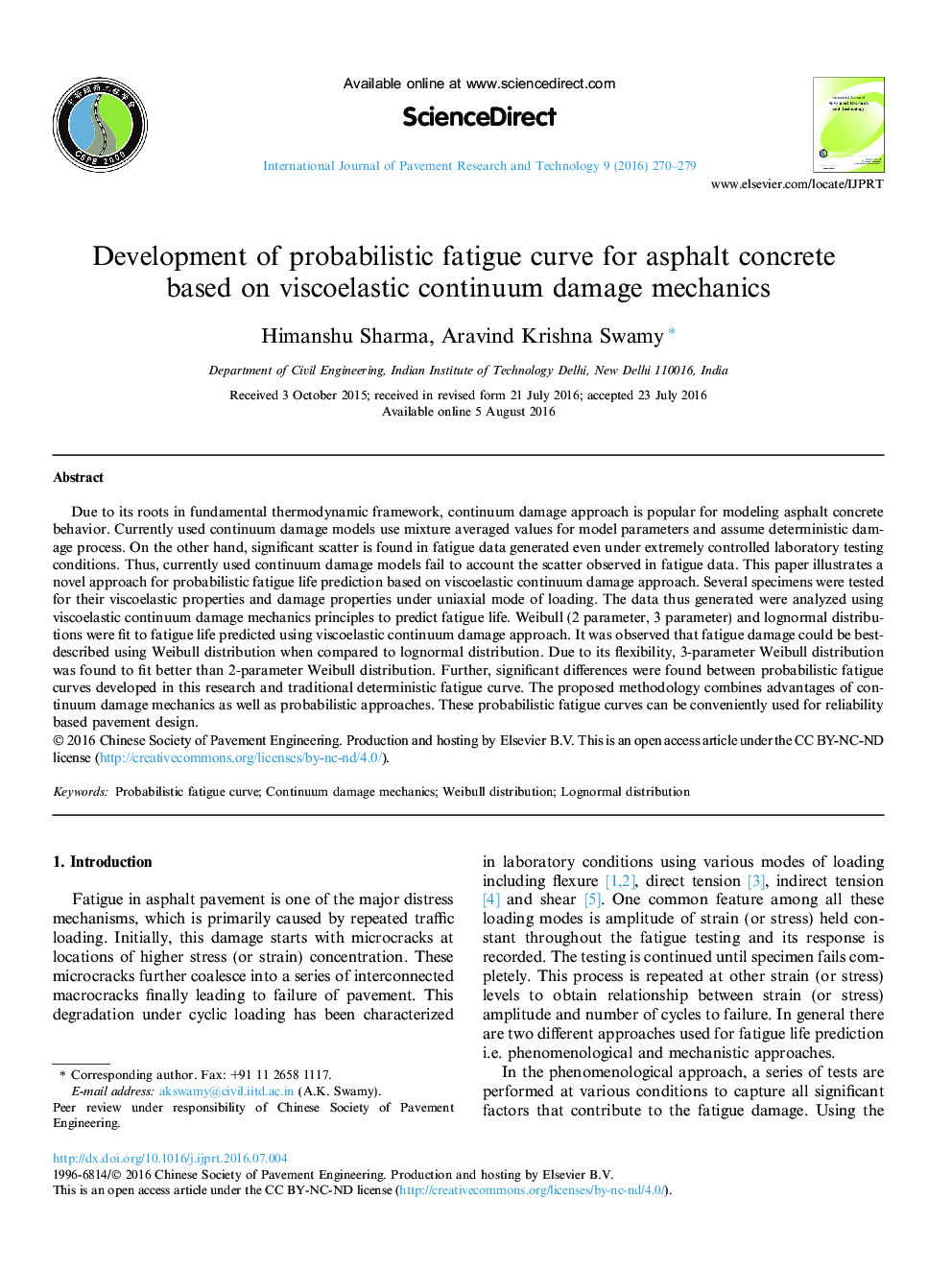| Article ID | Journal | Published Year | Pages | File Type |
|---|---|---|---|---|
| 4921977 | International Journal of Pavement Research and Technology | 2016 | 10 Pages |
Due to its roots in fundamental thermodynamic framework, continuum damage approach is popular for modeling asphalt concrete behavior. Currently used continuum damage models use mixture averaged values for model parameters and assume deterministic damage process. On the other hand, significant scatter is found in fatigue data generated even under extremely controlled laboratory testing conditions. Thus, currently used continuum damage models fail to account the scatter observed in fatigue data. This paper illustrates a novel approach for probabilistic fatigue life prediction based on viscoelastic continuum damage approach. Several specimens were tested for their viscoelastic properties and damage properties under uniaxial mode of loading. The data thus generated were analyzed using viscoelastic continuum damage mechanics principles to predict fatigue life. Weibull (2 parameter, 3 parameter) and lognormal distributions were fit to fatigue life predicted using viscoelastic continuum damage approach. It was observed that fatigue damage could be best-described using Weibull distribution when compared to lognormal distribution. Due to its flexibility, 3-parameter Weibull distribution was found to fit better than 2-parameter Weibull distribution. Further, significant differences were found between probabilistic fatigue curves developed in this research and traditional deterministic fatigue curve. The proposed methodology combines advantages of continuum damage mechanics as well as probabilistic approaches. These probabilistic fatigue curves can be conveniently used for reliability based pavement design.
